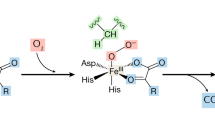Abstract.
This study aimed to investigate the role of endogenous nitric oxide (NO) in erythropoietin (EPO) gene expression in mice in vivo. For this purpose EPO mRNA was semiquantitated by ribonuclease protection assay in livers and kidneys of three groups of mice: wild-type (wt), endothelial NO-synthase (NOS) knockout mice (eNOS–/–), and wt treated with the NOS inhibitor N G-nitro-l-arginine methyl ester (50 mg.kg–1.day–1) for 4 days (wt+l-NAME). EPO gene expression was stimulated by normobaric hypoxia (8% O2) or by 0.1% carbon monoxide (CO) inhalation for 4 h each, or by intraperitoneal injection of 60 mg/kg cobaltous chloride (CoCl2) for 6 h. Renal EPO mRNA in wt increased 12-, 40-, and 13-fold over normoxic levels in response to hypoxia, CO and CoCl2 respectively. EPO mRNA was detectable in the livers only after CO exposure. Renal and hepatic EPO gene expression in wt+l-NAME appeared moderately increased relative to wt with a maximal 2.5-fold enhancement after CO exposure. EPO mRNA levels in eNOS–/– mirrored those of wt+l-NAME, but the effects were less prominent. Our data suggest that endogenous NO attenuates EPO gene expression in mice. This effect is dependent on the rate of EPO gene induction.
Similar content being viewed by others
Author information
Authors and Affiliations
Additional information
Received after revision: 7 September 1999
Electronic Publication
Rights and permissions
About this article
Cite this article
Todorov, V., Gess, B., Gödecke, A. et al. Endogenous nitric oxide attenuates erythropoietin gene expression in vivo. Pflügers Arch – Eur J Physiol 439, 445–448 (2000). https://doi.org/10.1007/s004249900192
Received:
Accepted:
Published:
Issue Date:
DOI: https://doi.org/10.1007/s004249900192




